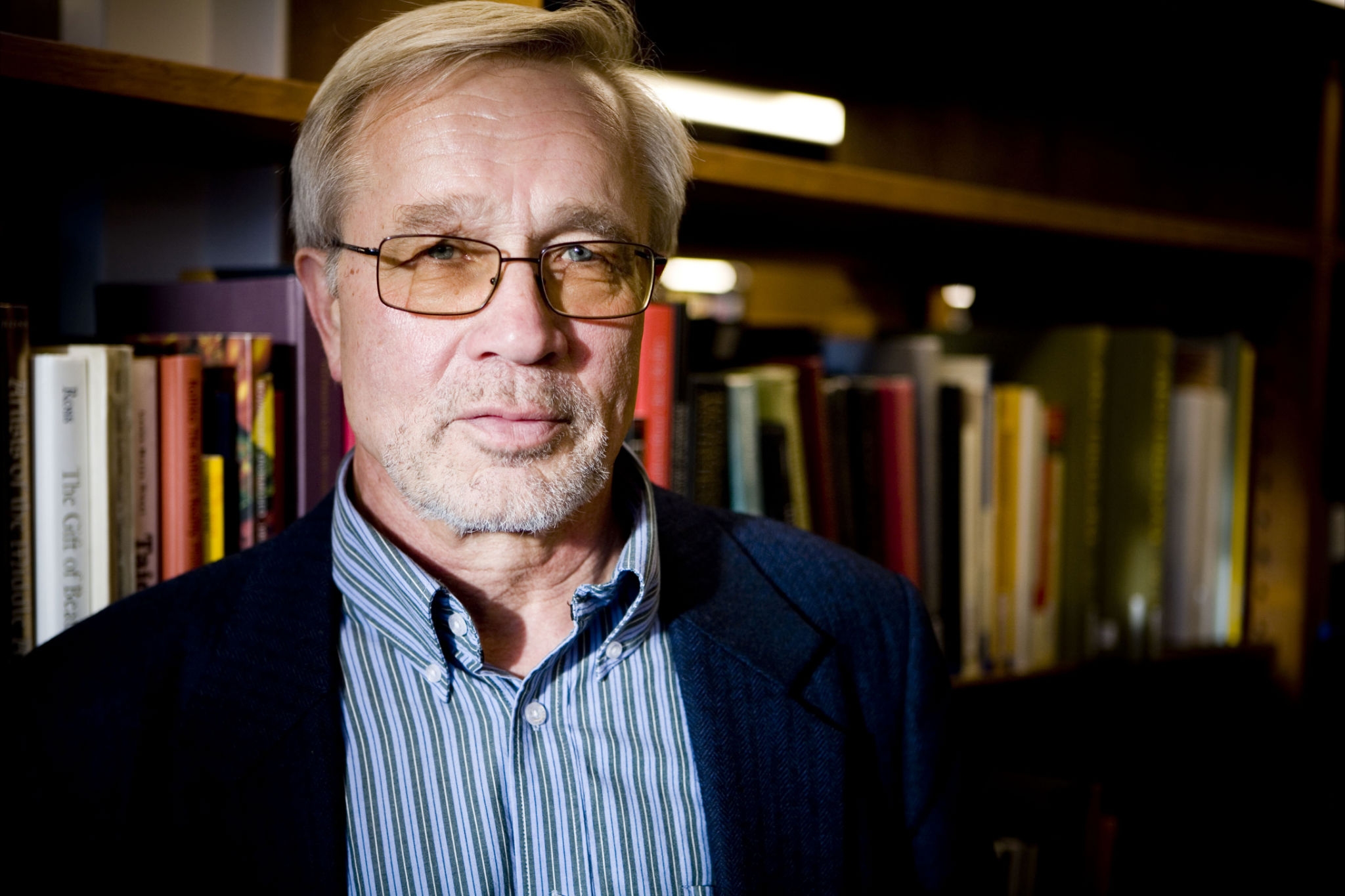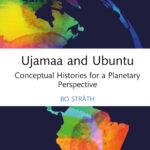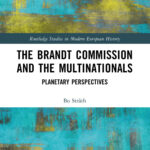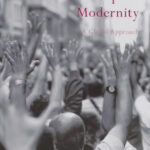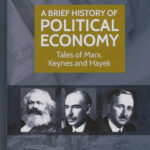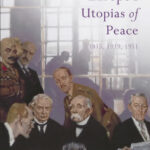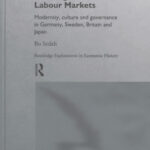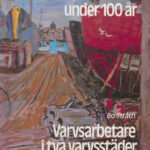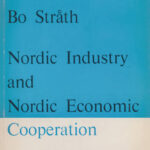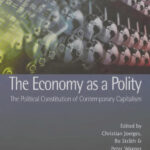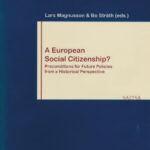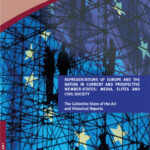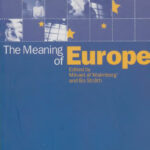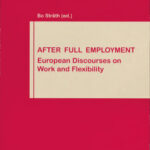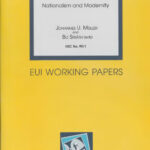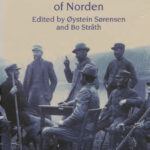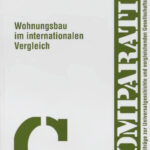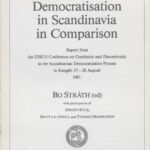Jonathan White is innovative and convincing in his approach to the question of how the future was made in the past and is or isn’t made today. He goes beyond a mainstream debate that departs from opposites like predictable or not predictable, makeable or not makeable, human-made or through self-propelling processes. Instead, he argues for a focus on tension, overlapping, and ambiguities between such opposites. White is looking for the in-between positions where the future is understood in terms of (un)predictability, (non)malleability, and (in)finiteness. The issue is the future as a political idea, the political presentness of the future, in particular our present’s experiences of scarcity of time and loss of future.
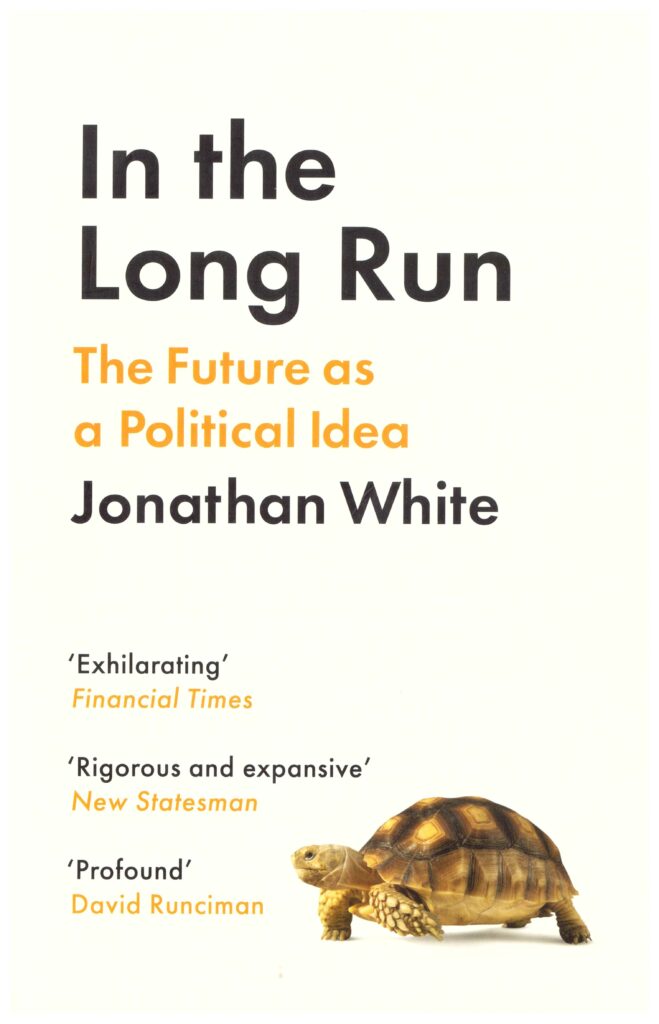
Jonathan White, The Future as a Political Idea. London: Profile 2024
White discerns, in a longer historical perspective, six particularly relevant dichotomies to shed light on his deeper concern about our shrinking, not to say disappearing future: the futures between open and closed, near and far, imagined and calculated, rational and impulsive, public and secret, shared and apart. White uses these contrasts to explore the mix forms between the opposite poles, the mix forms from where the future takes shape. The book’s final two chapters discuss the future in our era, the age of emergency politics and the preconditions of democratic temporality. White goes beyond frequent approaches around a generalizing unitary narrative divided in époques with key concepts like presentism, progressive time, accelerating time, shrinking future or the previous so forceful neoliberal idea of unbounded, endless future feeding back as presentism. He refines the prevailing conceptualization of time.
White does not only explore the future as an idea but also how politics to make the future was and could be organized. The future as an idea was and is not just a vision but also a matter of power to promote and realize that vision. Under conditions of democracy ‒ it is problems and preconditions of democratic future White deals with ‒ there is not only one vision but several competing. The shaping of the future was and is a combination of vision and action, contention and compromise. Jonathan White confronts ideas about the future as finality with an end stage, the imagination of a transition to a final, better world. The distinction between Hegel (and Marx) and Kant hoovers over the discussion of how to make democratic future. It is Kant’s solution, the permanent search by means of reason for a better world with the insight that we will never arrive at a final stage of perfection that comes to mind when reading White’s analysis. The road is the goal, and we can strive for the direction of that road under competition with alternative views.
The politics of shaping the future was historically since the French revolution closely connected to the idea of progress. History was taken on board by the enlightenment philosophers to demonstrate that the future was already occurring, that one lived in the era of progress. Progress was a synthesis of the historical outline of the past and a prophecy of the future. The future as progress presented Europe as a model with universal pretensions for other peoples to emulate. The idea of progress through a comparison of the past, the present, and the future has recently eroded heavily, first during the neoliberal market hegemony, and then, even more, in reaction to the collapse of that hegemony. This shift from progress towards what in the debate has been labelled as presentism is a main problem that White addresses.
He does it particularly in a chapter titled The Age of Emergencies reflecting on the present situation. The relations between planning/calculation and imagination, and between the near and the far future are disturbed. One might metaphorically understand the situation in today’s poly crisis by identifying with somebody standing in a rain of arrows and trying to take them down one by one, which soon proves impossible. Anticipatory action becomes impossible, only reaction remains. This is not White’s metaphor, but it describes the situation he struggles with. Visions of the future disappear and action for shaping and making it becomes reaction against what one sees or fears coming. The distance to the future shrinks, it becomes ever more emergent, a shadow rather than an open horizon. All politics become emergency politics, “a dash of irreconcilable demands.” Emerging problems, connected or unconnected, are coming tighter provoking at most reactions but providing no long-term solutions.
It is interesting to contrast the shrinking future that White analyzes with the preceding neoliberal dilution of the future, leaving calculation, and planning for the future, to the free play of the market forces. (Of course, behind the term market forces were hiding the detailed and extensive calculation/planning of the future in the global corporations). The radical market language put prices on everything under transformation of values to prices. Values used to be treated as absolute became relative for sale or purchase. The main activity became consumption in a hectic present by cash or credits. The latter kept the future alive as a debt to it to pay back, of course. However, the main thought was that it is better to spend now than to wait for an uncertain future. The future disappeared in the daze of the endless world market.
The reaction to this neoliberal dissolution of the future into the endless went the opposite way: the compression of it. On this point one must emphasize that White’s problem with the shrinking future deals with a democratic future. Not the future as such but the democratic future is at stake. The making of the future as a democratic project has become ever more under pressure.
A new catch word is rapidly profiting terrain as a savior disconnected from historical experiences: disruption. It is breaking through as the decisive instrument to break paralysis into action. Disruption means destruction. The ever-louder voices for disruption speak without any deeper reflection of what the word means and where it comes from. Jonathan White is clear about the connection to the futurist movement in the early twentieth century paving the way for fascism. The futurists are the historical point of reference with their impulsive cries for the destruction of what is, unmaking the authority of state and law, and rejecting authority based on contract. On the ruins of what it was, a new world will be rising from the ashes like a phoenix, they argued. What this new world would be was unclear, but it would shine. There is a second reference in this world of thought: Schumpeter’s idea of creative destruction. Few who enter the debate with the snappy catch phrase have read his book Capitalism, Socialism, and Democracy published in 1942 during the burning world war. Capitalism renewed itself continuously through creative destruction, Schumpeter argued. In the end, he dreamt, it would destroy/dissolve itself because of its success and become socialism. Schumpeter’s idea was far from new. In an article in the 1930s about the implications of the reproducing capacity of works of art through photography and film, Walter Benjamin refers to Karl Marx’s prediction that capitalism in future would create conditions that made its self-abolition possible. This was Marx’s and Schumpeter’s utopia of a peaceful future world. Through apocalypse or not, the present preachers of disruption have no idea of what will come after the end of the world. They are only sure that it will be something better than the present. Today the US American tech billionaires are the agents of chaos. They no doubt connote fascist-creating futurism or futurist-derived fascism rather than democracy. And they should remove the blinders from those who talk about disruption and creative destruction in terms of regenerating rejuvenation.
White shows how one way to reconcile imagination and calculation, vision and action was to treat calculation as a matter of the near future and imagination as a matter of the distant future. As a social protest, the identification with a far problem can be part of a plan for a different future based on the insight that one cannot achieve everything soon. This approach was applied by social democrats in their attempt to reconcile reformism and revolution. However, the risk was that the imagination of the further future became like the carrot that keeps horse trotting. There is an asymmetry of power in the distinction between short term and long term. The imagination where action is scheduled for the future easily become dreams left to the marginalized when long-term means the postponement of a problem rather than its solution. However, the protest could also be spontaneous and furious, a reaction for immediate change, where the future was near but less clear.
White sees the rise of fascism in the 1920s and its preparation in the futurist movement during the previous decade as a rise against the calculating elites. Marinetti’s and the other futurists’ celebration of actions that defied predictions was an expression of such protests. They ran amok against the scientification of the future.
White is aware of the enormous challenges democracy is facing. The imagination of the future in democratic terms requires planning/calculation in mutually reinforcing dynamics between democratic visions of the future and political action for its shaping. There is a need for the re-establishment of horizons of the future. However, not with ideas of a final goal to arrive to through a major transformation, White convincingly emphasizes. The future with a final goal would be a dream that goes through destructive apocalypse. White’s proposal is continuous problem solution leading to gradual transition of societies rather than vain expectations in grand and final transformation.
White refers to Louis-Sébastien Mercier’s The Year 2440: A Dream If Ever There Was One in 1771, the bestseller with over 40 editions accompanying the French revolution. A seven-hundred-year distant future was hardly suitable for concrete political expression but was more a way of expressing criticism before it was allowed by the revolution. It was a temporal version of Thomas More’s spatial no land vision, the utopia as locus of what was desirable but not possible. The censorship of criticism disappeared after the revolution and the utopia shifted to political claims. The future became a core dimension of two ideologies. The liberals referred to the future in their outlines of the market, the future under capitalism, whereas the socialists invoked it to discern a world beyond the market, after capitalism.
White’s outline of the talk and shaping of the future in the nineteenth century is per se well known, with names from the early socialists with their experimental communities and work organization, to whom the future became near and concrete through implementation of the idea, via the dispute between Wilhelm Weitling, with his idea of spontaneous activism sparking the revolution, and Karl Marx’s plea for preparing for the revolution but biding the time until it was due, and then the German social democrats in their reformist move where the revolution became an ever more distant goal. But not the carrot that keeps horse trotting. However, White’s outline is more than a reiteration of well-known facts. White puts them in a new and convincing framework of how the future was controversially debated and made around questions of self-propelling or not, the future in the long or short run, the relations between vision and action. He shows how the vision of the future and how to shape it became tied to projects for parliamentary democracy around political parties beginning with the social democrats.
Based on this development the future became in the twentieth century not only imagined but also calculated through estimation of risks. Simmel gets to speak from his monetary perspective where the capitalist economy in the wake of the industrial revolution was a matter of monetization with the task of changing qualitative values to quantitative values. Money put a number on things and absolute values got a price which made them relative. The money-driven economy filled the daily life with “weighing, calculating, enumerating.” The development brought and required ever more exactness of how to estimate the future. The calculation was in constant tension with imaginations of the future as speculation. The decades after 1870 until 1914 were the heyday of speculative approaches to the future. The speculations continued after the world war and after the next as we know. When the probabilities of the calculations became hard to estimate, speculation took over. In retrospect we know that speculation ended in bursting bubbles followed by governments paying for reconstruction in a pattern that is recurring rather than progressive.
Building on his historical approach, White concludes that the political imagination necessary for a sustainable democracy must have a long-term horizon of the future covering decades. However, not too many, just a few. If more, we lose sight of the problems of the present. If the horizon is too near it becomes harder to negotiate disagreements. Politics becomes muddling through, reactive rather than actively shaping the future. The historical model that White wants to translate to our time’s future is the social democratic ideology- and interest-driven struggle for better living standards of the working class in Europe after 1870. It was a slowly advancing struggle where visions with long-term goals were forged in conflicts with the representatives of capital and conservative or reactionary state leaders. There was no calm transition to the goals. The fight for them was mobilizing. The conflict kept the feasibility of the goals alive. The struggle connected the far future to the near. Today one can see that many goals were never achieved as they were imagined, and other goals were added. One can see that there was no final stage, if one had believed that, but there was commitment and movement towards a different society and one can see that there emerged a different society which had never been there without the struggle for it. The conflict and the language that triggered and drove it created sustainable momentum and feelings of common concerns.
How feasible is the translation of this historical model for a conscious and active shaping of our time’s future? White is aware of the problems and the great risks ahead but does not go into any detail. The final words deal with emphasizing how important it is not to lose sight of the more distant horizons that progressive interventions require. Keeping an eye on the long run means acting as if there still is time, time for clarifying struggles about them. Long run means a continuously moving end. White’s final words: “Democracy can survive turmoil, distress and decline; what it struggles to withstand is the expectation of an end.”
Two crises, two urgencies that complicate the realization of White’s thesis are looming. The ecological crisis which began as a resource exhaustion and environmental pollution crisis in the early 1970s and in the recent decades became the climate crisis which provokes end time scenarios and feelings of extreme urgency on the one side, and resignation on the other side. One difference to the historical parliamentary democracy model that White wants to revitalize is that there is no contention with a political adversary like socialists against liberals or conservatives, although political parties have different views on the degree of urgency, of course. The conflict is different. It becomes a conflict against time, how much time we have or not have.
The situation has no doubt brought reinforced international cooperation at governmental and parliamentary levels. However, the solutions are often technical with much decision-making in the hands of the few. The far imaginations White wants are there, but rather as milestones to pass without detailed discussion of how to get to the milestones and what efforts and sacrifices the movement cost. That, too, becomes an expert issue. When the milestone goals too much intrude into the growth model that keeps the parliamentary model going, there is a tendency to give up or postpone the goals. Climate politics polarizes those who fear an end stage and require immediate action and those who play down the problem and do not see any need for action.
On principle, one would think that climate politics could function as a policy field for White’s horizon of a few decades, but the problem is different than striving for better living standard and social welfare, where White gets his case. The decisive difference is that the target of the climate protest is nature itself not an opposing ideology or interest, and that the struggle must be planetary rather than national. A move towards White’s model requires much persuasion work with a new language.
However, the present trend seems to go in another direction. The climate is losing focus to the connected migration issue, which once, in the 1950s and 60s in Western Europe was exactly a question that underpins White’s argument with the long-term integration and housing programs for the immigrants from Southern Europe to the expanding industries in the North. These preconditions changed with the collapse of the Fordist production regime in the 1970s and the neoliberal globalizing reorganization of the labor markets as the response. Integration became acceptance of growing inequality in these markets. The idealizing concept of multi-cultural with the self-deceptive assumption that integration doesn’t cost anything, concealed this development during the bonanza years before the collapse in 2008. However, in the end, the ghettoization in the wake of this transferring the costs of integration to the market and to the poor migrants themselves became too visible to remain concealed.
The growing migration after 2015 in reaction to wars and climate catastrophes was a tipping point, bringing short-sighted reactions from the parliaments. The highly emotional debate there is contradictory and inconsistent underpinned by social media mobilization. The aging societies in the old industrial societies will not be able to keep their welfare provision without immigration of labor and at the same time ever stronger voices argue that the immigrants threaten the welfare standards. Humanity and security split up instead of reinforcing one another, whereby security is getting the upper hand. Locking them up and throwing them out is the mantra instead of integrating them by giving them decent living conditions, employment, and perspectives
There is potential for this policy field to become exactly a case of what White asks for. Through a new language with a new progressive problem formulation around housing, training, education and health care programs, a parliamentary confrontation of the prevailing situation with a long-term policy horizon, the vision could bring parliamentary action. Progressive dynamics in the migration field could be a good point of departure for generating progressive long-term dynamics in the climate policy field, too, with national parliaments increasingly seeing themselves in their planetary context. The migration and the climate questions are interwoven. The crucial issue at stake is how to turn the evil circle into a virtuous one.
However, there is also potential for the opposite disintegrative direction. Neoliberal hegemony was based on the idea that politics needed to be market-compliant and in that sense, it was without alternatives, narrowing the scope for politics and reducing the politicians to executors of what they believed were the market’s dictates. Social democrats and conservatives tried to get a foothold on an ever-more de-politicized neoliberal middle field until it all fell apart in 2008. Since then, the nationalist and authoritarian language is growing in strength. The depoliticized middle field is moving rightwards, and re-politicization occurs along a new frontline about how far on the right xenophobia should be implemented. There is a need for massive opinion-forming measures to get the migration issue back to contention about how to organize human wellbeing on a planetary scale on a new politicized middle field.
The second crisis confronting parliamentary democracies is the growing cries for disruption, destruction of existing democratic structures without clear ideas about what will come out of it but for autocratic or oligarchic rule and supporting populism. On this point White is clear about the historical warnings coming from the origin of fascism as already noted. The trend has a name: Trumpism. However, it is far from limited to the USA. One of the key issues in the parliamentary confrontation of the trend deals with the control of emotions, the regulation or non-regulation of social media. And the control of artificial intelligence. In other words, the issue at stake is the monitoring of the global tech platforms and the billionaire oligarchs that rule them. Another key issue is the regulation of global finances. Democratic rule builds on political leaders listening to and steering opinions, listening to the people without being its echo. Populism is more about initiating discontent and riding on it. There is no clear distinction between the two approaches, and this makes it difficult but long-term sustainable politics requires for democratic approach.
With these huge problems of the future with potential to destroy democracy in mind, Jonathan White has written an important book about how to save democracy.
How to quote:
Cit. Bo Stråth, “The Shrinking Future: Our Time’s Problem.” Blog. https://www.bostrath.com/planetary-perspectives/the-shrinking-future-our-times-problem/ Published 12.02.2025
Comments
Please submit you comments with the Contact Form or send an Email to bo.strath@gmail.com.
